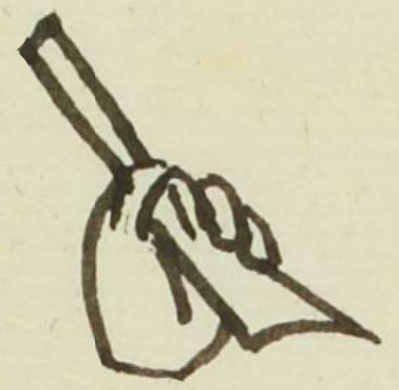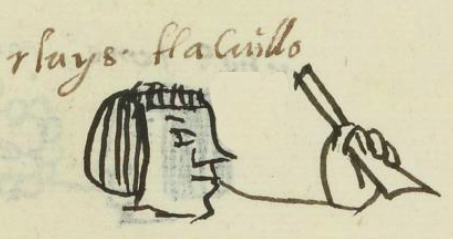Tlacuilo (MH576v)
This black-line drawing of the simplex glyph for the personal name or occupation Tlacuilo (“Writer/Painter,” attested here as a man’s name) shows a full view of a human hand grasping a writing or painting implement (brush? quill?). The shape of it is much like a huictli in miniature.
Stephanie Wood
Writing on paper and digging in agricultural fields were activities that had a conceptual overlap. The verb icuiloa (or ihcuiloa, with the glottal stop) was sometimes combined with terms like tlalli (land parcel) and cuemitl (chinampa). See some examples below.
This "Tlacuilo" glyph and gloss are placed as though this is the man's name. They are not in the usual place in this manuscript for an occupation, and yet it still seems likely that this person was a scribe.
Stephanie Wood
luys tlacuillo
Luis Tlacuilo
Stephanie Wood
1560
Jeff Haskett-Wood
writer, scribe, escribiente, escritor, escribano, literacy, alfabetismo, pens, plumas, paintbrushes, pinceles, nombres de hombres

tlacuilo, writer, painter, scribe, notary, https://nahuatl.wired-humanities.org/content/tlacuilo
El Pintor, El Escribano
Stephanie Wood
Matrícula de Huexotzinco, folio 576v, https://www.loc.gov/resource/gdcwdl.wdl_15282/?sp=232&st=image
This manuscript is hosted by the Library of Congress and the World Digital Library; used here with the Creative Commons, “Attribution-NonCommercial-ShareAlike 3.0 License” (CC-BY-NC-SAq 3.0).







